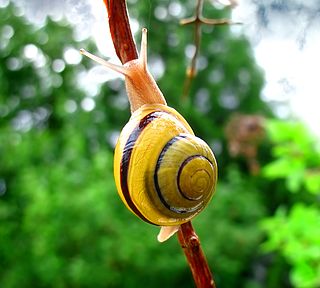
Anna Anderson was an impostor who claimed to be Grand Duchess Anastasia of Russia. Anastasia, the youngest daughter of the last Tsar and Tsarina of Russia, Nicholas II and Alexandra, was murdered along with her parents and siblings on 17 July 1918 by Bolshevik revolutionaries in Yekaterinburg, Russia, but the location of her body was unknown until 2007.

The 2K11 Krug is a Soviet and now Russian medium-range, medium-to-high altitude surface-to-air missile (SAM) system. The system was designed by NPO Novator and produced by Kalinin Machine Building Plant. Its GRAU designation is "2K11." Its NATO reporting name is SA-4 Ganef, after the Yiddish word גנבֿ meaning 'thief'; the name was used because the system resembled the Bristol Bloodhound.

Manfred Krug was a German actor, singer and author.
Krug Champagne is a Champagne house founded by Joseph Krug in 1843. It is based principally in Reims, the main city in France's Champagne region and is one of the famous Champagne houses that formed part of the Grandes marques. Today the house is majority owned by the multinational conglomerate LVMH Moët Hennessy – Louis Vuitton S.E. whose portfolio includes other well known wine brands such as Moët & Chandon, Veuve Clicquot, Château d'Yquem and Ruinart. Despite LVMH's majority ownership, the Krug family is still actively involved in all the key decisions of the house but does not manage the day-to-day operations.
Barbara Krug is a retired East German sprinter who specialized in the 400 metres.
Krug is a German surname meaning jug, and therefore it is an occupational surname based on occupation of a jug/mug seller/manufacturer or of an innkeeper. Notable people with the surname include:

Ignatz Urban was a German botanist. He is known for his contributions to the flora of the Caribbean and Brazil, and for his work as curator of the Berlin Botanical Garden. Born the son of a brewer, Urban showed an interest in botany as an undergraduate. He pursued further study at the University of Bonn and later at the University of Berlin where he gained a doctorate in 1873. Urban was appointed by A. W. Eichler to run the Berlin Botanical Garden and supervised its move to Dahlem. He also worked as Eichler's assistant on the Flora Brasiliensis, later succeeding him as editor. In 1884 Urban began working with Leopold Krug on his Puerto Rican collections, a collaboration would later produce the nine-volume Symbolae Antillanae, one of his most important contributions, and his 30-part Sertum Antillanum. Urban's herbarium, estimated to include 80,000 or more sheets, was destroyed when the Berlin Herbarium was bombed in 1943, during the Second World War.

The Amphisphaeriaceae are a family of fungi that is mainly found in parts of New Zealand, South America, Asia and parts of Europe. According to the 2007 Outline of Ascomycota, there were 41 genera placed within the family, although the position of 13 of those genera is uncertain. The 2020 Outline of Fungi and fungus-like taxa severely reduced the family to 4 members.

The Last House on the Left is a 2009 rape and revenge film directed by Dennis Iliadis and written by Adam Alleca and Carl Ellsworth. A remake of the 1972 film of the same name, it stars Tony Goldwyn, Monica Potter, Garret Dillahunt, Aaron Paul, Spencer Treat Clark, Riki Lindhome, Martha MacIsaac, and Sara Paxton. The film follows Mari Collingwood, a teenager who is abducted, raped, and left for dead by a family of violent fugitives. When her parents learn what was done to her, they seek vengeance against the family, who have taken shelter at their summer home during a thunderstorm.
Seynesia is a genus of fungi in the family Cainiaceae.
Selinia is a genus of fungi in the class Sordariomycetes. It consisted of two species in 2008, and had 5 species in 2023.
Delitschia is a genus of fungi in the family Delitschiaceae.

Trichobolus is a genus of fungi in the Thelebolaceae family.
Zopfiella is a genus of fungi within the Lasiosphaeriaceae family.
Rhytidospora is a genus of fungi within the family Ceratostomataceae.

Panpulmonata is a taxonomic clade of snails and slugs in the clade Heterobranchia within the clade Euthyneura.

Torey Krug is an American professional ice hockey defenseman for the St. Louis Blues of the National Hockey League (NHL). Krug previously played for the Boston Bruins from 2012 to 2020.
Preussia is a genus of fungi in the family Sporormiaceae. The widespread genus contains 51 species that grow on dung or in the soil.

Bertia is a genus of fungi within the Bertiaceae family, and Hypocreomycetidae subclass.
Cainia desmazieri is a species of fungus in the family Cainiaceae. It was first described as a new species by Claude Moreau and Emil Müller in 1963, and then later validly published in 1978.









